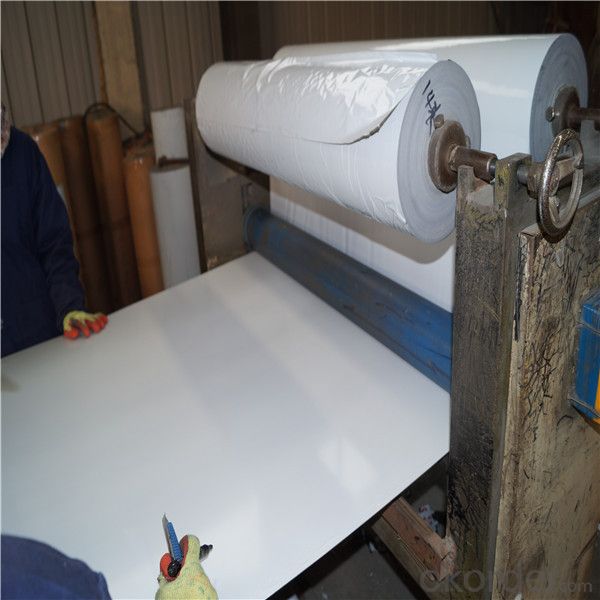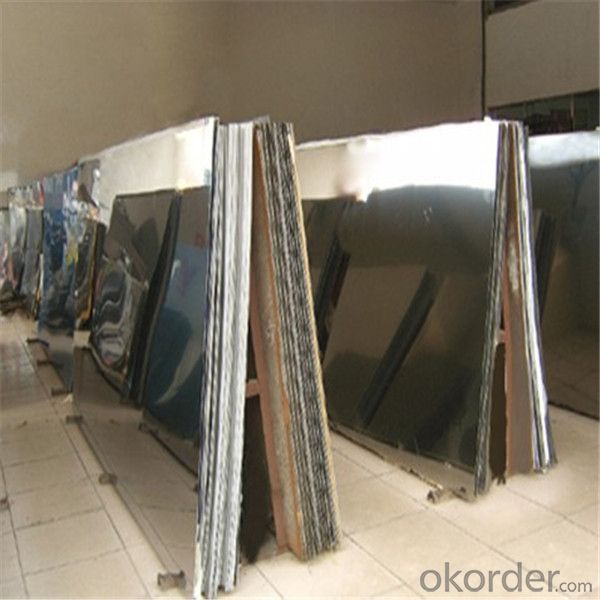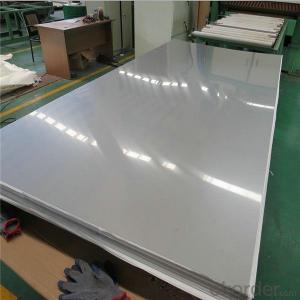stainless steel sheet 304 304L 321 316 316L 309 347H 310 310S
- Loading Port:
- Shanghai
- Payment Terms:
- TT OR LC
- Min Order Qty:
- 3 m.t.
- Supply Capability:
- 20000 m.t./month
OKorder Service Pledge
OKorder Financial Service
You Might Also Like
Item specifice
stainless steel sheet 304 304L 321 316 316L 309 347H 310 310S
Stainless steel sheet 310S
SS304,SS304L,SS309,SS310,SS316,SS316L
Specifications: thickness: 1 mm ~5 mm
Width: 1000-1500mm
SS304,SS304L,SS309,SS310,SS316,SS316L
Stainless steel sheet 310S
Stainless steel coils /Cold rolled stainless steel
hot rolled stainless steel/stainless steel sheets
Specifications: thickness: 1 mm ~5 mm
Width: 1000-1500 mm or any cutting width
L: coils or any cutting length.
Delivery service : 2 weeks leading time and precision cutting.
chemical composition
RADE | Chemical composition | ||||||||||
C | Cr | Ni | Mn | P | S | Mo | Si | Cu | N | Other | |
304 | ≤0.07 | 17.00-19.00 | 8.00-10.00 | ≤2.00 | ≤0.035 | ≤0.030 | - | ≤1.00 | - | - | - |
304L | ≤0.030 | 18.00-20.00 | 8.00-10.00 | ≤2.00 | ≤0.035 | ≤0.030 | - | ≤1.00 | - | - | - |
309S | ≤0.08 | 22.00-24.00 | 12.00-15.00 | ≤2.00 | ≤0.035 | ≤0.030 | - | ≤1.00 | - | - | - |
310S | ≤0.08 | 24.00-26.00 | 19.00-22.00 | ≤2.00 | ≤0.035 | ≤0.030 | - | ≤1.00 | - | - | - |
316L | ≤0.030 | 16.00-18.00 | 12.00-15.00 | ≤2.00 | ≤0.035 | ≤0.030 | 2.00-3.00 | ≤1.00 | - | - | - |
317L | ≤0.08 | 18.00-20.00 | 11.00-15.00 | ≤2.00 | ≤0.035 | ≤0.030 | 3.00-4.00 | ≤1.00 | - | - | - |
321 | ≤0.12 | 17.00-19.00 | 8.00-11.00 | ≤2.00 | ≤0.035 | ≤0.030 | - | ≤1.00 | - | - | Ti5(C%-0.02)~0.08 |


- Q:How do stainless steel sheets differ from other types of sheets?
- Stainless steel sheets differ from other types of sheets primarily because of their composition and unique properties. Unlike other types of sheets that are made from materials like aluminum, brass, or copper, stainless steel sheets are made from an alloy of iron, chromium, and other elements. One of the key differences is the corrosion resistance of stainless steel sheets. The addition of chromium to the alloy creates a passive layer on the surface of the sheet, which protects it from rust and corrosion. This makes stainless steel sheets highly durable and suitable for various applications, especially in environments exposed to moisture, chemicals, or extreme temperatures. Another distinguishing factor is the strength and toughness of stainless steel sheets. They have excellent mechanical properties, including high tensile strength, which makes them resistant to deformation and damage. This makes stainless steel sheets more reliable and long-lasting compared to other types of sheets. Additionally, stainless steel sheets offer a wide range of aesthetic options. They can be easily customized with different finishes, such as brushed, polished, or embossed, to achieve various appearances and textures. This versatility in design makes stainless steel sheets a popular choice in architectural, interior design, and decorative applications. Furthermore, stainless steel sheets have excellent hygiene properties, making them suitable for applications in the food and healthcare industries. They are easy to clean, non-porous, and non-reactive, which prevents the growth of bacteria and ensures the safety and cleanliness of the surfaces they cover. In summary, stainless steel sheets differ from other types of sheets due to their corrosion resistance, strength, durability, aesthetic options, and hygiene properties. These unique characteristics make stainless steel sheets a versatile and reliable choice for a wide range of applications in various industries.
- Q:Stainless steel thermos cup 304 and 201 material what is the difference?
- 304 stainless steel corrosion resistance, high prices: 201 and 304 stainless steel material in essence difference, mainly in the elements contained in the two are not the same. 304 stainless steel corrosion resistance and stamping performance far better than 201, and the 304 stainless steel is generally used in the complex environment, need strong resistance to corrosion for 201 place, environmental requirements are not very high, or the stainless steel demand is not high place.
- Q:Can stainless steel sheets be used in medical equipment?
- Medical equipment can indeed make use of stainless steel sheets. Due to its exceptional properties like resistance to corrosion, durability, and ease of cleaning, stainless steel is a favored option for medical devices and equipment. It is frequently employed in surgical instruments, implants, hospital equipment, and laboratory tools. The versatility of stainless steel sheets makes them a common choice in the manufacturing of medical equipment as they can be shaped into various forms and sizes. Furthermore, stainless steel is highly biocompatible, meaning it poses no harm to bodily tissues and can be safely used in medical applications. All in all, stainless steel sheets are a dependable and widely accepted material for medical equipment, offering both hygienic qualities and long-lasting performance.
- Q:What's the difference between galvanized steel and stainless steel?
- Galvanized steel sheet is to prevent the corrosion of steel plate surface, and prolong its service life, the surface of the steel plate is coated with a layer of metal zinc, this kind of zinc coated steel sheet is called galvanized sheet.
- Q:What are the different types of stainless steel sheet finishes for marine applications?
- Marine applications commonly employ various types of stainless steel sheet finishes to enhance durability, corrosion resistance, and aesthetic appeal. 1. No. 1 Finish: Generally utilized for structural applications, this rough and non-reflective finish is achieved through hot-rolling. It offers good corrosion resistance and is suitable for marine applications where aesthetics are not a primary concern. 2. No. 2B Finish: Achieved through cold-rolling, annealing, and pickling, this smooth and reflective finish boasts excellent corrosion resistance. It is widely used in marine applications that require a moderate level of aesthetics. 3. No. 4 Finish: This brushed finish features a dull and non-reflective surface. It is obtained by grinding with progressively finer abrasives until the desired appearance is achieved. No. 4 finish is commonly chosen for marine applications where aesthetics play a crucial role, as it provides a clean and uniform look. 4. No. 8 Mirror Finish: Highly reflective, this finish is achieved by polishing with progressively finer abrasives until a mirror-like surface is obtained. No. 8 mirror finish is commonly utilized in marine applications where a high level of aesthetics is desired, as it offers a visually appealing and reflective surface. 5. Satin Finish: This semi-reflective finish is achieved by brushing the stainless steel sheet with a fine abrasive material. Satin finish is often selected for marine applications that require a moderate level of aesthetics, as it provides a clean and visually appealing surface. Apart from these standard finishes, specialized finishes like textured or patterned finishes are available for marine applications to enhance slip resistance. The choice of finish depends on specific requirements, including corrosion resistance, aesthetics, and functionality in the marine application.
- Q:Are stainless steel sheets suitable for railway station platforms?
- Railway station platforms can benefit from the use of stainless steel sheets. This material is known for its durability, making it a suitable choice for platforms that experience heavy foot traffic and extreme weather conditions. Its resistance to corrosion is especially important in areas exposed to moisture, like platforms where rain, snow, or spilled liquids may occur. Furthermore, stainless steel sheets are easy to clean and maintain, ensuring a hygienic and safe environment for passengers. The sleek and modern appearance of stainless steel also adds to the overall aesthetic appeal of the railway station. In summary, stainless steel sheets possess the necessary strength, durability, and aesthetic qualities required for railway station platforms.
- Q:Are stainless steel sheets resistant to lactic acid?
- Yes, stainless steel sheets are generally resistant to lactic acid. Stainless steel is known for its corrosion resistance, and lactic acid is not typically strong enough to cause significant damage to stainless steel surfaces. However, the resistance may vary depending on the specific grade and quality of stainless steel used. It is always recommended to consult with a material expert or conduct proper testing to ensure the suitability of stainless steel sheets for specific applications involving lactic acid.
- Q:How do I prevent stress relaxation on stainless steel sheets?
- Stress relaxation is a phenomenon that occurs in stainless steel sheets when they are subjected to prolonged exposure to high temperatures or constant stress. To prevent stress relaxation on stainless steel sheets, you can take the following measures: 1. Proper selection of stainless steel grade: Different grades of stainless steel have varying resistance to stress relaxation. Choose a grade that offers high resistance to this phenomenon, such as austenitic stainless steels like Type 304 or Type 316. 2. Avoid excessive temperatures: Stainless steel sheets should be operated within their recommended temperature limits. Exposing them to temperatures beyond their specified range can accelerate stress relaxation. Ensure that the operating temperature remains within the permissible limits. 3. Control the stress levels: Minimize the stress levels applied to the stainless steel sheets during fabrication and installation. Avoid excessive bending, stretching, or deformation that could introduce stress into the material. Properly design and fabricate the components to reduce stress concentration points. 4. Post-weld heat treatment: If the stainless steel sheets are welded, consider performing a post-weld heat treatment. This process involves subjecting the welded area to controlled heating and cooling cycles to relieve residual stresses and minimize the potential for stress relaxation. 5. Reduce exposure to aggressive environments: Stainless steel sheets are corrosion-resistant, but exposure to aggressive chemicals or environments can accelerate stress relaxation. Avoid prolonged exposure to corrosive substances or environments that may compromise the material's integrity and cause stress relaxation. 6. Regular inspections and maintenance: Periodically inspect the stainless steel sheets for signs of stress relaxation, such as deformation, cracks, or changes in dimensions. Regular maintenance and timely repairs can help identify and address any issues before they worsen. 7. Consult with experts: If you are unsure about the specific requirements to prevent stress relaxation in your stainless steel sheets, consult with metallurgical experts or stainless steel manufacturers. They can provide guidance on the best practices and materials to ensure long-term performance and prevent stress relaxation. By implementing these preventive measures, you can significantly reduce the risk of stress relaxation in stainless steel sheets, ensuring their durability and maintaining their structural integrity over time.
- Q:Are stainless steel sheets suitable for industrial kitchens?
- Yes, stainless steel sheets are highly suitable for industrial kitchens. They are corrosion-resistant, durable, and easy to clean, making them ideal for the rigorous demands and high hygiene standards of industrial kitchen environments. Stainless steel sheets also have excellent heat resistance and can withstand heavy use, making them a reliable choice for commercial cooking areas.
- Q:What are the different types of stainless steel sheets?
- There are several different types of stainless steel sheets, including austenitic, ferritic, martensitic, and duplex stainless steel sheets. Each type has unique properties and is suitable for different applications.
1. Manufacturer Overview |
|
|---|---|
| Location | |
| Year Established | |
| Annual Output Value | |
| Main Markets | |
| Company Certifications | |
2. Manufacturer Certificates |
|
|---|---|
| a) Certification Name | |
| Range | |
| Reference | |
| Validity Period | |
3. Manufacturer Capability |
|
|---|---|
| a)Trade Capacity | |
| Nearest Port | |
| Export Percentage | |
| No.of Employees in Trade Department | |
| Language Spoken: | |
| b)Factory Information | |
| Factory Size: | |
| No. of Production Lines | |
| Contract Manufacturing | |
| Product Price Range | |
Send your message to us
stainless steel sheet 304 304L 321 316 316L 309 347H 310 310S
- Loading Port:
- Shanghai
- Payment Terms:
- TT OR LC
- Min Order Qty:
- 3 m.t.
- Supply Capability:
- 20000 m.t./month
OKorder Service Pledge
OKorder Financial Service
Similar products
New products
Hot products
Related keywords





























